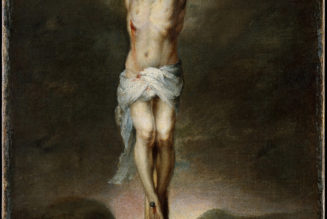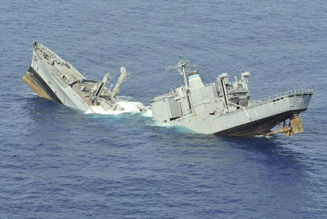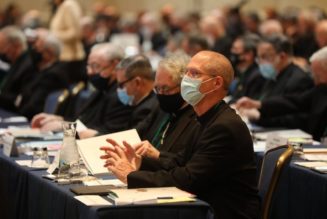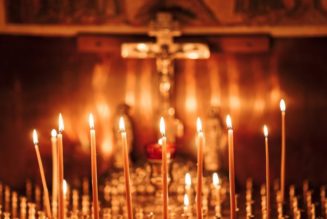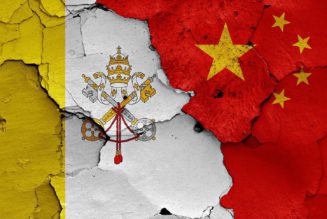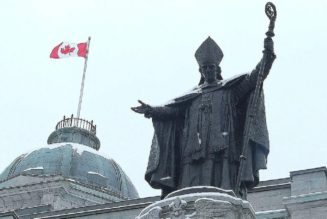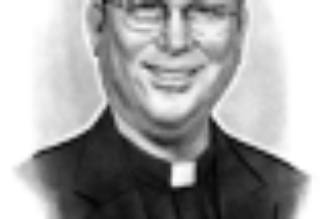By Phil Lawler ( bio – articles – email ) | May 10, 2024
The book opens like a mystery novel. The year is 2006. An Irish farmer, digging for peat, notices an odd shape in his bucket. Looking carefully, he discovers that it is a very old book. Bringing it to experts, he learns that it is a psalter, more than a thousand years old, written on papyrus, bound in leather. “To find a book made the same way, conservators had to go to the binding of the Nag Haamadi codices in Egypt, fourth-century Gnostic Gospels that had been discovered in 1945.”
What was an ancient Egyptian psalter doing in a peat bog in Tipperay? In Monastery and High Cross: The Forgotten Eastern Roots of Irish Christianity, Connie Marshner gives a surprising answer: The psalter was brought to Ireland by monks who had settled as early as the 4th century— before the time of St. Patrick.
St. Patrick, undoubtedly one of the greatest evangelizers in the history of the Church, brought the Gospel message to Ireland in the 5th century. The evidence of his success in that mission is astonishing; within just a few generations, while Christendom was sinking into what is commonly called the Dark Ages, Ireland was the great bastion of Christian learning, where monks preserved the treasures of the faith while barbarians ravaged most of Europe.
The details of St. Patrick’s mission are lost to history. His own Confession reveals much about his zeal and his prayer, but offers none of the names, dates, and places that would provide a clear picture. Other accounts of his life came only much later, and were obviously embellished so that the myths obscure the man. (To take one popular example, St. Patrick could not have driven the snakes out of Ireland, because there never were snakes there.)
But a few of the available facts buttress Marshner’s theory:
- St. Patrick was not the first Christian missionary to Ireland. In fact he was not the first bishop (unless “Palladius,” who was sent by Pope Celestine in 431, is the same as “Patrick,” as some Church historians hypothesize).
- Ireland had been a pagan nation, whose leaders, the druids, were by no means peaceful people. Yet there was no widespread violent resistance to the spread of the Christian faith, no martyrs from those early years.
- It was in the monasteries of Ireland— hundreds of them— that the faith was preserved. For centuries the Church in Ireland retained a distinctly monastic character, which as times produced friction with the diocesan structures prevailing in Rome.
In this book Connie Marshner assembles an enormous amount of circumstantial evidence to suggest that the spectacular spread of the faith in Ireland—and eventually from Ireland back to continental Europe and across the world— was strengthened by the earlier presence there of communities of monks who came across the Mediterranean from Egypt.
After the Council of Chalcedon, when the Coptic Church broke with Rome, life would have been uncomfortable for those Christians who retained their allegiance to the universal Church. Some Egyptian monks found their way to Gaul, establishing a lively presence there, and some apparently followed the trade routes to Ireland. They would have brought with them a form of Christian practice that was already distinctively different from that of western Europe.
Monastery and High Cross piles on the evidence of that distinctive Eastern Christian heritage. The early Irish Church had a special devotion to saints who were popular in the East, but not much known elsewhere in Europe, such as St. Anthony of the Desert. The oldest Irish churches include icons and inscriptions and architectural elements that point toward the East—including what appear to be the iconostasis still found in Eastern churches. Even the well-known “Irish cross” appears to have come from the East, in this case from Armenia.
All these elements of Eastern influence came to Ireland without having left any significant impact in Europe. Thus it seems most likely they came directly across the Mediterranean. Marshner reasons:
The architecture and art that define ancient Ireland— small churches in groups of seven, some with decorated walls defining the sanctuary, cumhdaigh or book shrines, stone slabs with chi-rho inscriptions, high crosses decorated with Syro-Palestinian art formulas, illuminated manuscripts with colophons, artifacts of ancient liturgical practice— all have origins that can be traced to the Christian East. In the absence of printed manuals, how could these ideas and this craftsmanship have been transmitted other than by human beings who traveled to Ireland?
We know very little about the liturgy of the early Church, but there are clear indications of a strong Eastern influence there as well:
Antiphonal singing (alternating verses sung by different groups) had been done by the ancient Hebrews, and it was practiced throughout the East, especially in Egypt. It was not introduced into the Gallican liturgy until the seventh century— yet, along with other distinctive Eastern elements, it was practiced in Irish monasteries before then.
Ireland boasts a rich history of Marian devotion. Of course popular devotion to the Virgin is as old as the Church. But it was the theologians of Alexandria, in Egypt, who pushed for formal recognition of Mary as Theotokos at the Council of Ephesus, and wrote the first known hymns to the Virgin. The Irish devotion, Marshner argues, shows the influence of that tradition.
Her book leaves many questions unanswered, and in several places she points to areas where further research could be fruitful. But Marshner’s effort is enough to show how the two complementary traditions of Christianity, East and West, together fueled an explosive growth of the faith. “It matters,” she writes, “because as Catholic Christians we all need to have a long view of our own history.”
Sound Off! CatholicCulture.org supporters weigh in.
All comments are moderated. To lighten our editing burden, only current donors are allowed to Sound Off. If you are a current donor, log in to see the comment form; otherwise please support our work, and Sound Off!

There are no comments yet for this item.


